As the importance of Content marketing continues to expand for nearly every type of business, industry, and brand, it’s critical to remember the importance of taking a measured approach that focuses on value and attribution in order to develop a program with staying power.
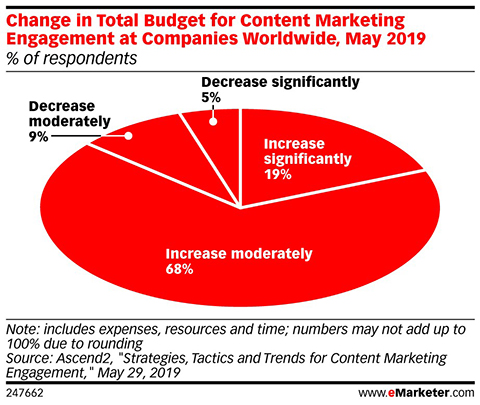
At its core, Content Marketing should be viewed as a critical component of every marketing program in today’s fragmented media environment. The benefits of a well-constructed program include but are not limited to SEO, customer engagement across all appropriate channels, top-funnel sales strategies, internal communications, and much more. To help guide the development of an impactful Content Marketing program, we’ve created 6 steps that we view as key pillars in the development of successful programs.
First, we’ll list out the 6 pillars of Content Marketing, and then we’ll tell you why they matter.
The 6 Pillars of Content Marketing
As an Atlanta content marketing agency, we’ve learned a few things about what it takes to create an effective content marketing strategy. It starts with six pillars:
- Don’t Lose the Plot: Strategy first, then storytelling – then solutions.
- The Value Exchange: What are we getting, but more importantly, what are we giving?
- The Measure of Success: Pick KPIs early and track them often.
- Timing is Everything: Get the right message to the right people at the right time and in the right place.
- You Don’t Know What You Don’t Know: Test, test, and test some more.
- Keep Your Word: We do what we say we’re going to do – for our consumer and for our brand.
Don’t Lose the Plot
New initiatives always bring new energy with them, and starting a content marketing program is not an exception. But we can’t immediately get caught up in only the excitement of a new project – we have to make sure that what we’re doing is grounded in a real, tangible, and measurable approach. Without a strategy, our content marketing program is likely to end up floating without direction and ultimately phasing itself out as we struggle to articulate the value and results attributed to the level of effort and spend.
So where to start? Let’s start with why we are considering the development or optimization of a high performing Content Marketing program.
- Why are we creating content?
- How is this content working to support overall business goals and objectives?
- Why would our audience engage or interact with this content?
- What action do we want our audience to take based upon engaging with our content?
- What value will our customer or prospective customer obtain from this content?
Once we’ve answered those questions, it’s time to figure out the stories we want to tell – and the problems they’ll solve. Content marketing programs are created for a variety of reasons, but most companies use them to increase brand awareness, increase knowledge of the brand or program attributes and specifics, or maximize customer conversions, as seen in this chart from eMarketer below.
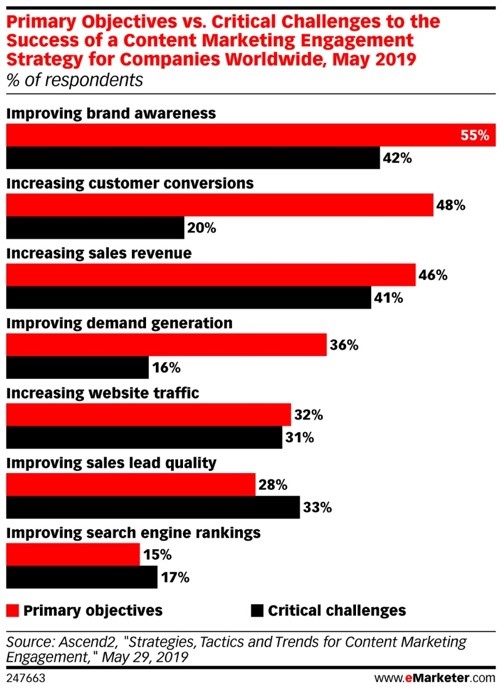
The key is to start with a strategy that is focused on providing value to our audience while directly linking back to our overall business goals and objectives. By taking this approach, we are ensuring that all of the content being created is aligned with the direction our brand is heading. With this perspective in mind, there should be minimal need to retrofit content to match back to business goals, which only burns budget and time. Here’s a look at how some companies do it:
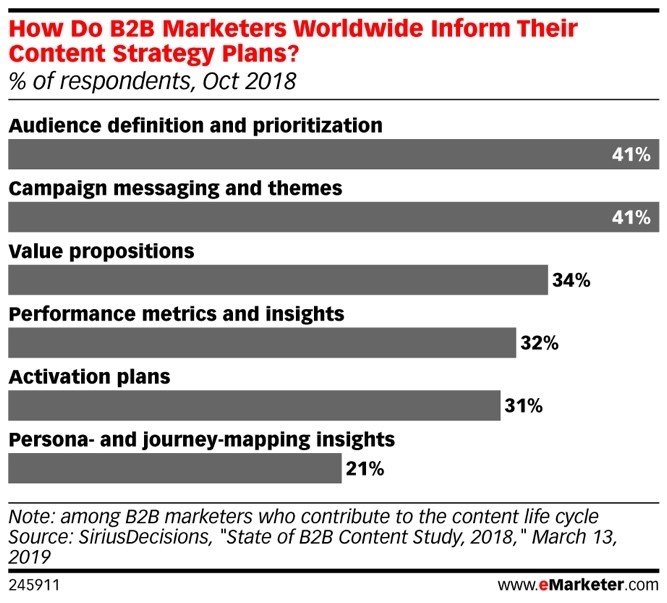
Here’s a quick checklist of things we do while building our strategy:
- Become experts on the state of content marketing in our vertical. What are our competitors doing? We answer that then find best-in-class examples.
- What is our audience wanting to see? What information will they value most? What will help them to make a decision or take action on our behalf? Determine if it is possible for a type of content or message to drive a higher degree of engagement, consideration, preference, or loyalty.
- How are we measuring success? KPIs matter and will guide how we build out our program.
- Choose our keywords – content marketing isn’t just here to increase our clout as a thought leader, it should also be a powerful tool for Search Engine Optimization. We make sure we know what search results we want to show up in ahead of time and then we tag our content appropriately.
- Develop a formal articulation of the process we will need to follow in order to create content. We figure out who will be running point on the initiative and decide how often they’ll be creating content. If we don’t decide how to maintain the cadence, content marketing can easily fall by the wayside.
Processes vary from company to company, but the key factor is that the processes created are efficient, effective, and scalable. Here’s a high-level overview of the six stages of an effective process:
- Research: We always need to make sure we’re sharing relevant, factual information.
- Planning: We decide how much content we’re going to make when we will be sharing it, where we place it, and more.
- Writing: We put together drafts of our pillar content and craft any social copy around it.
- Asset Creation: Somewhat in tandem with the writing phase, we work with designers, animators, and more to make our pieces dynamic and compelling.
- Editing: While there is basic proofing during the writing phase, we have a team member who isn’t as close to the work edit it.
- Analysis and Optimization: After posting our content, we analyze performance and optimize for the next round.
With a plan in place, it’s time to move on to the process of actually figuring out what to make and how.
The Value Exchange
“Value” is defined as a “fair return or equivalent in goods, services, or money for something exchanged.” In this case, we’re asking customers for the time it takes to engage with our content – and then later, their loyalty. But we also have the ability to capture meaningful data points from our audience that should not be discounted. Site behavior. Email. Personally Identifiable Information (PII), just to name a few. Understanding the true value associated with this level of data capture is an important step to building out an effective Content Marketing program. With that in mind, we need to give them something that holds as much value to them as everything that they provide to us, the brand.
To develop content that is valuable to our audience, we consider the following:
- Is there a challenge that we are helping the customer to overcome?
- Are we looking at a specific persona or segment?
- Beyond the message, what type of content is appropriate for this customer, at this point in the customer journey? Understanding this will improve the likelihood of creating positive customer interaction.
- Is this content appropriate to be shared? Are the quality and message at a level where our audience would want to share it with others? In asking these questions, we are not only applying critical thinking to our execution, but we are also taking into consideration the psychology of those individuals that have the highest probability of becoming a brand advocate – customers that have such an affinity for our brand that they take action on our behalf.
Next in our process is thinking through topic and message selection. While this will vary greatly across industry and customer type, there are a few proven considerations to work through as we are building out content categories or buckets and an overall message calendar.
- Is this topic timely?
- How does this topic support additional marketing strategies and tactics across other channels?
- What is the goal of this topic? And where does it fit in the customer journey?
- Is this a topic that our company, brand, or team can have a unique perspective on?
- Do we have new or unexpected information that we can include here?
- How competitive is this topic, and if so, how can we differentiate ourselves?
- What kind of derivative content can we build based on this topic?
Thinking through these questions gives us a head-start on creating content that engages our audience and motivates them to take action in a manner that is supportive of our overall business goals and objectives.
The Measure of Success
We live in a data-driven world, and content marketing is no exception. But we can’t prove a tactic works if we don’t have a way to measure impact. To address this potential pitfall, we select goals and KPIs early-on and set up appropriate tracking systems. Take a look at the chart below for some common content marketing metrics to track.
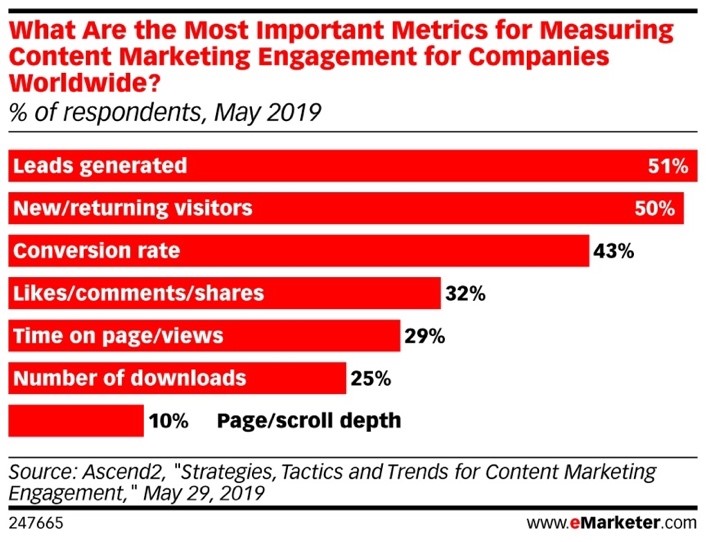
According to this chart, 51% of marketers focus most heavily on leads generated and new/returning visitors. These stats make sense, but we find additional value in a few less-common metrics:
- SEO Rankings: In the hands of a knowledgeable creator, SEO is an incredibly powerful lead-gen methodology. Keeping an eye on where articles and sites rank in organic search is paramount to a successful content marketing strategy.
- Actual Sales: Connecting blog content to actual sales may seem like a huge lift, but with proper tracking through sales funnels and CRM systems, it is doable. It’s important to consult with sales teams to properly incorporate content marketing into any lead nurture program. If a CRM system isn’t currently in place, a content marketing strategy provides a great opportunity to implement one and drive growth across the business.
- Email Subscribers: If someone reads our blog and then signs up to receive our emails, we know that we are providing them with valuable information. By requesting continuing contact, this is a strong indicator that they may convert down the line.
Our goals determine what metrics should be tracked. To achieve those goals, we constantly monitor and report out on our KPIs. Otherwise, we’ll never know what is working and we will not be able to develop a hypothesis surrounding successful and unsuccessful efforts.
When we develop a testing strategy, we make sure to include the objective, channels, audience, specific KPIs, metrics, targets, and more. The form below serves as a model for every goal we set:
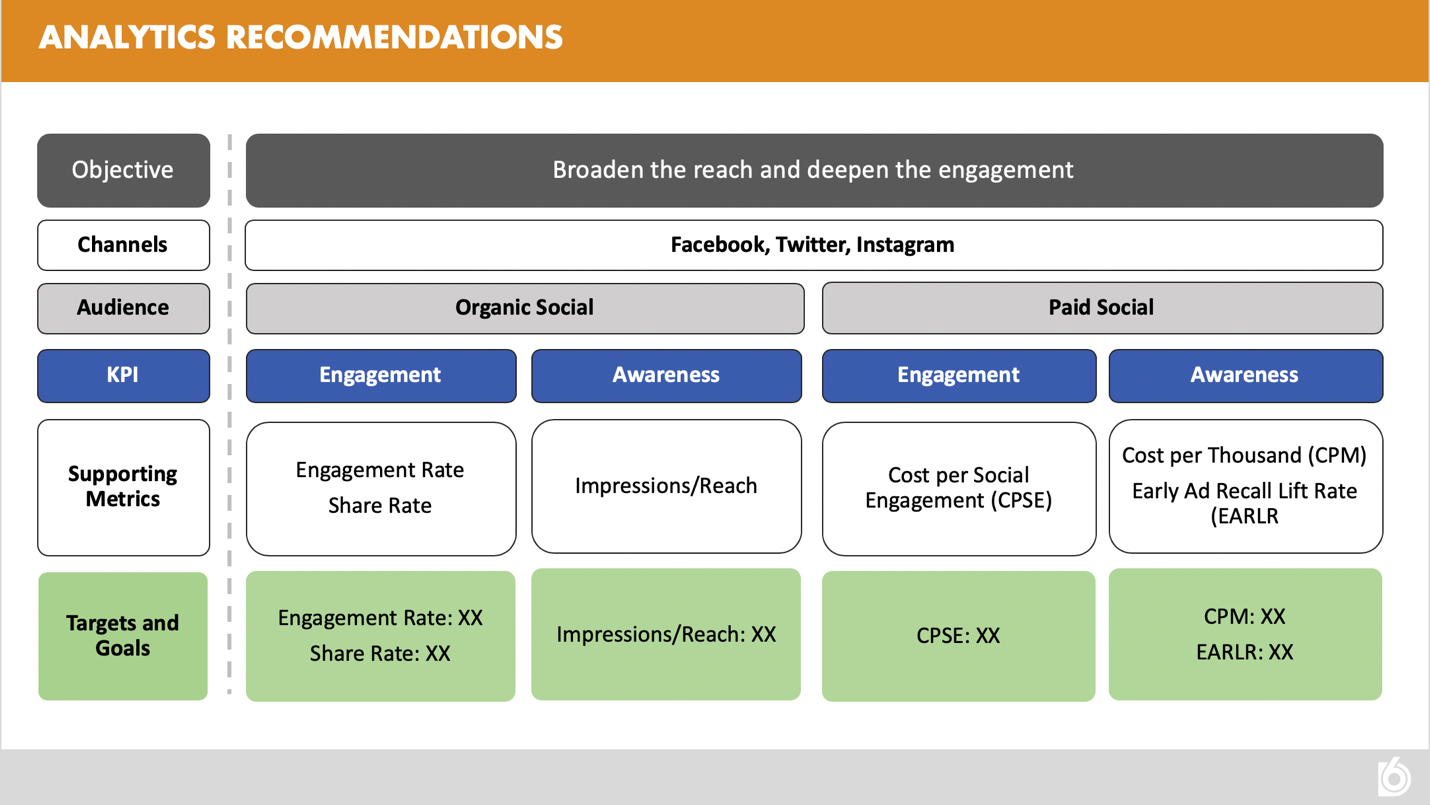
Granted, we also recognize that not everything is so cut and dry. For this reason, when we are first setting our goals for a content marketing campaign, we divide the data into the following categories:
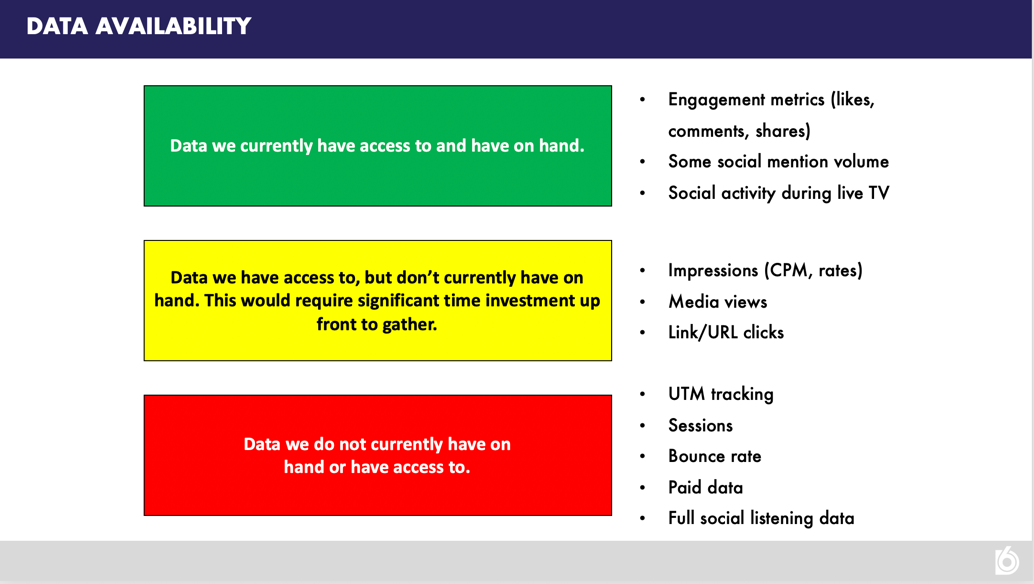
That way we know how to track what we have access to and what we need to do to ensure we are obtaining all-encompassing data. Using these two templates, we have some of the most comprehensive analytics available.
Now that we’ve established our process and goals, we must decide where our content lives.
Timing is Everything
The internet is a vast ecosystem of sites, services, and social networks. The most successful content marketing brands utilize this. While we always make use of our site as a hub, we also ensure that our content is findable across the web. In our tech-drenched society, we can be everywhere on every device. And we should be.
Second, only to creating effective content, the most important element of content marketing is making sure people see it. To do this, we share our work across every resource that makes sense. As we go through the process of creating pillar content, we are also focused on how we can cut it down and utilize it across multiple mediums.
If we’re making a listicle, there’s a strong chance it will become an infographic that gets farmed out to other content creators. It may become a video so that we can take advantage of social algorithm bias and reach a larger audience. If the content is appropriate, we may also turn it into an Instagram live Q&A. And, of course, it will find its way into our email drip campaign.
The benefits here are two-fold – our content is digestible to a variety of audiences and it gives us even more content to work with. By placing our content in multiple ecosystems, we also see increased reach and activity across all of our branded platforms. More eyes and more activity means more people enter our funnel and provide us the opportunity to convert them down the line.
Here is a sample customer journey through a robust content marketing funnel:
- Research: The customer realizes they need a product or service.
- Consideration: They figure out exactly what they need, prioritize what’s important, and find the providers. Here is likely where we first reach them.
- Comparison: They narrow down their top choices and decide who they want to spend more time with.
- Decision: A customer may spend a lot of time here bouncing between a few options. Here is where we ensure that we are differentiating ourselves and offering the customer the value they seek.
- Purchase: Decision made, the customer purchases a product or service. While this is a victory, we can’t rest on our laurels here.
- Advocacy: Customers advocate for the brands they love the most. We need to make sure that we are continuing to offer them value, over and over again so that they keep choosing us.
The funnel feeds into itself, and content marketing is an important element of it. Just take a look at the kinds of choices it can influence:
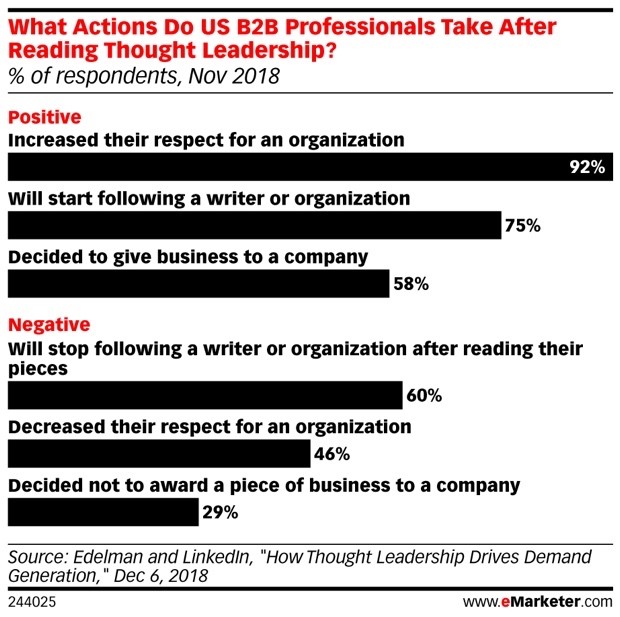
At any point along the aforementioned journey, the customer will be utilizing multiple platforms and devices. By taking advantage of the data we collect from their initial visit, we can show them retargeted content, provide them customized emails, give them personalized chatbot messages, and more.
This is where a robust CRM system enters the picture. We track every potential interaction through one CRM program, allowing us to get a full-funnel view of what it takes to make our audience convert. By highlighting our customer in our CRM system early, we’re able to uniquely position ourselves as the partner they need.
It’s not enough to simply reach our audience on a variety of platforms, we keep tabs on how our campaign is performing as well. Implementing a simple link-tracking strategy with Google Analytics helps us zero in on exactly what drives those clicks and views. And depending on what the data tells us, we make changes.
We’ve got out plan, we’ve got our content, and we’ve mastered strategic placement. Now how do we optimize the campaign?
You Don’t Know What You Don’t Know
The key to figuring anything out is to fail fast and fail smart. Discovering what doesn’t work is the easiest way to discover what does. And the only way to know if we are failing is to measure and test.
Testing is a fundamental aspect of any successful content marketing strategy, and our process is no exception. Here are the three pillars we live by when testing:
Data: At the root of any good testing strategy is data. The numbers are key and make everything else possible. We spoke about data above, but that was largely data on the customer themselves. We also track things like content type, tone, approach, and much more. A consistent, robust tracking system is the most important factor of our testing strategy.
A/B Testing: Testing random theories and thoughts without a structure is doomed to fail. And we’ll never know how well something is doing unless we have something to compare it against. A/B testing answers this need. It’s a pretty simple process: test two versions of something and keep the one that works. But we must make sure that we only change the one element we are testing. If we have multiple differences between two versions of something, it is impossible to know why one version out-performed the other. Control factors are mandatory. For example, if we wanted to see how one particular infographic performed versus another, we’d post each infographic with the exact same copy on the exact same social network around the same time of day.
Hypothesis Formation: All the insights in the world are useless if we don’t use them to create hypotheses. Testing isn’t just about “this vs. that”, it’s also a way to come up with well-thought-out theories about what will and won’t work in the future. An unexpected learning from one article could provide the kindling for our next great success. We must always be open-minded about our findings and approach them from all angles.
Now let’s move on to a few examples of what we actually test:
- How We Convey Information: At the top of our testing list is the very nature of our content. What is the best way to convey the information we want to share? What about our readers’ lifestyles should we take into consideration? How can we incorporate email? Where does a blog make senses versus an informational video series? How much time does our audience have to consume this information?
- Content Format: We live in a world full of media. Maybe not everyone wants long-form blog posts. Test out podcasts, videos, webinars, listicles, infographics, and more. We like to see what really resonates with the people we’re trying to reach.
- Headlines: To drive performance we first need to drive clicks. Content marketing is competitive, and headlines are our first impression. We test out a variety of headline approaches and find what gets our audience excited. CoSchedule has a great headline analyzer tool to help with this.
- Visual Elements: We can’t provide readers with thousands of words of text and not break it up now and then. Visuals add interest to our blog. There are a variety of ways to test images – infographics versus photos, videos versus cinemagraphs, and so on. We particularly recommend motion graphics, as they can really connect with an audience.
- Opt-In Form: We like to find out what happens if we ask our readers to convert right on the page – it’s surprising how many people join the email list if we put out quality content. But depending on the vertical, we may find out that our users prefer a softer sell – regardless, it’s something to test.
Testing is time-consuming but effective. As we test, the efficiency of our programs will continue to improve over time. The most important variable to executing a successful test and learn program is consistency across efforts and reporting, which brings us to our sixth and final pillar.
Keep Your Word
When we laid the foundation of our content marketing plan, we outlined a comprehensive strategy, set achievable and ambitious goals, and implemented a robust testing regime. Now we have to look at everything together and figure out how to optimize it.
Outside of the surface numbers in our analytics reports, we perform regular checks of our content and make decisions based on those learnings. Here are a few questions that help us better analyze our content.
- What is the value of this information to our audience?
- What new information is available on this topic?
- Are we offering a unique, actionable perspective that sets us apart from competitors?
- Are we maximizing this content across all platforms? If not, what can we do better?
- Have we created enough derivative content? What can we add?
- What additional tests can we run to fully optimize this content?
- Have the SEO rankings and rules changed? How can we stay up-to-date?
- What are our competitors doing?
- Is this content authentic?
There is easily evident surface value in analyzing our content, but the most important question to ask is whether or not we are resonating with our audience as authentic & useful. Here’s proof of why that’s important, courtesy of Stackla:
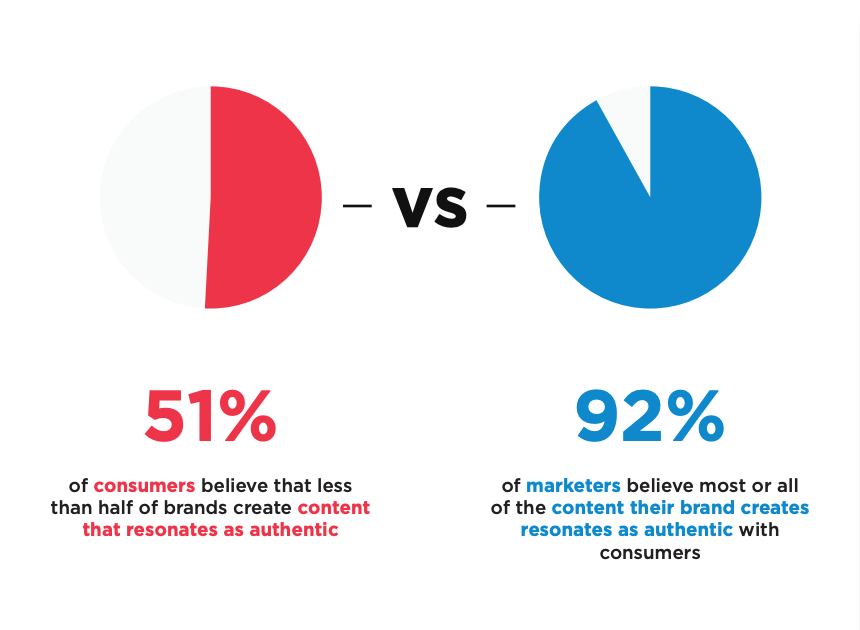
The discrepancy between what customers believe and what marketers believe about their authenticity is staggering; we never want to be a brand that customers consider inauthentic.
Stats like this aren’t rare – there’s often a disconnect between what we think we’re doing and what we’re actually doing. So we always make sure we are regularly conducting neutral, honest audits of our content. Our strategy and our business are better for it.
Analysis is only the beginning. We must also have the wherewithal to change things that aren’t currently working. If new information becomes available, we go back and update older articles. If we find out that long-form blog posts cause our readers to shy away, we consider creating more bite-sized content. And if customers find us inauthentic? We work to earn their trust and provide them with information that feels honest and transparent.
Putting It All Together
Content marketing isn’t a quick win, it’s the long game. And like all games, it must be played consistently to be won. Just take a look at how many businesses are in the process of optimizing, scaling, and developing their content marketing – it never ends.
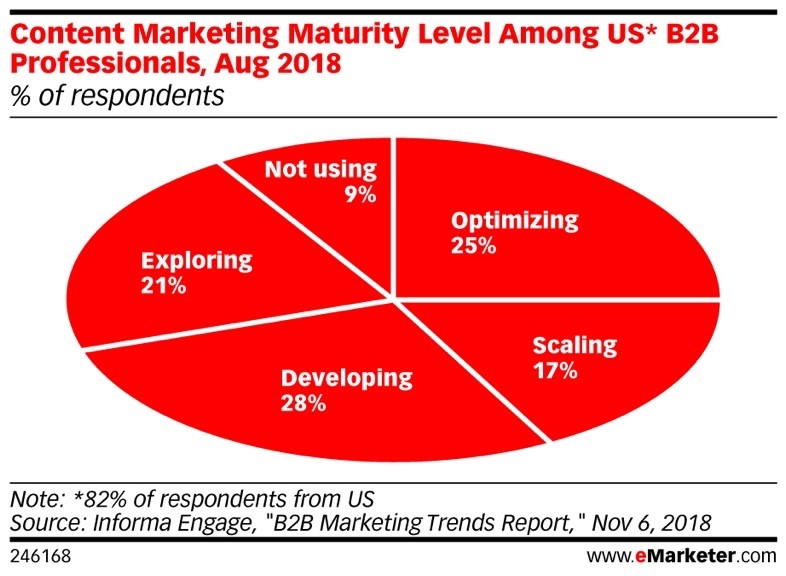
It starts at the top of the funnel and goes all the way to the end, over and over again. We simply don’t become thought leaders overnight.
Strategy takes time.
Building up a repository takes time.
Setting up analytics takes time.
Creating content takes time.
Testing takes time.
What does all this mean? Results take time. The hare does not win the race of content marketing, the tortoise does.
It took Buffer 2 years and thousands of posts before their blog became the powerhouse that it is today. The journey will vary from company to company, but it will always take time.
Don’t expect to see a number one SEO ranking in a month’s time, and don’t let the slow results be disheartening. We certainly don’t. The key to content marketing is consistency – it establishes us in the minds of others as a thought leader and it helps us rank higher thanks to Google’s preference for newer content.
Too often good content marketing strategies die because they aren’t sustained – we don’t plan to add ourselves to that list. Our philosophy is that anything worth doing is worth doing well.
Content marketing is powerful – but only if done well on a consistent basis. While this guide serves as a jumping-off point into the wealth of knowledge on content marketing, we’ll be writing deep-dives into some of the topics listed above. Once we’ve done that, we’ll link them here.
We know content marketing is a big lift, so if you would like to tap into our expertise as you embark on your own journey, you reach out to us by hitting the “Contact” button at the top of this page. We’ll be happy to lend you our insight.




